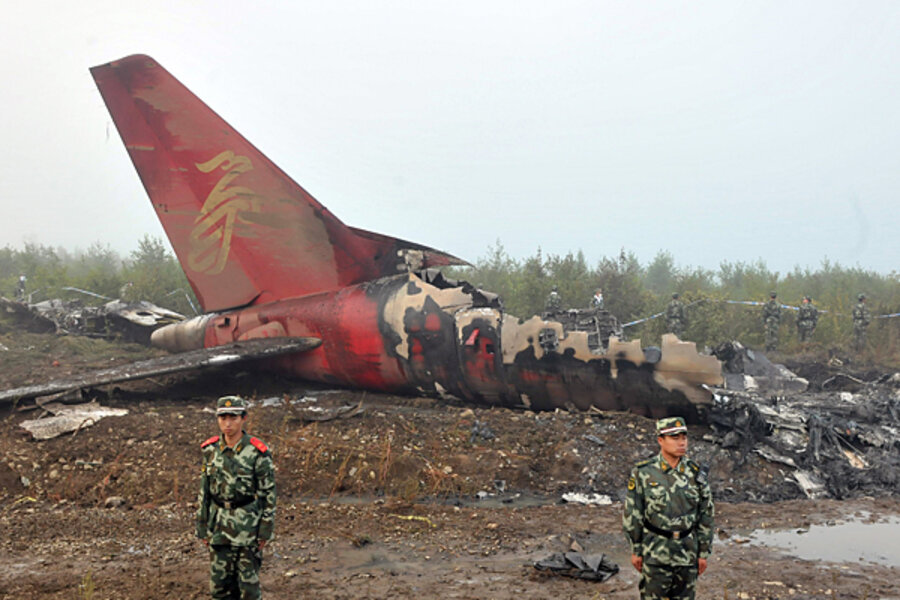China plane crash highlights new risks for China's booming air travel industry
Loading...
| Beijing
The plane crash in China that killed 42 people late Tuesday night was a rare blot on the country's aviation safety copybook, say experts here. But it highlights the risks of flying in and out of some small regional airports at night, something more airlines are forced to do to meet the demands of China's booming travel industry.
A domestic Henan Airways passenger jet crashed and burst into flames at a fog-shrouded provincial airport near Yichun in northeastern China, killing 42 and injuring 54, according to official reports.
It is still not known what caused the accident “but from news reports I deduce that the reason is human error,” says Wang Yanan, deputy editor of Aerospace Knowledge magazine. “I think it came down too fast or too steeply.”
It emerged Wednesday that another airline, China Southern, decided last August to avoid night flights into Yichun. A technical note on the airline’s website said that “in principle there should be no night flights at Yichun airport,” citing worries about landing-strip lighting, weather conditions, and the surrounding hilly terrain.
The newly built airport, one of a number of such regional facilities springing up all over the country to serve China’s booming travel industry, sits in a forested valley. China will have 244 airports by 2020, up from about 175 today, according to figures from the Civil Aviation Administration of China (CAAC).
“Over the last few years, because of the high demand and big market, regional aviation has developed very fast,” says Mr. Wang. “The quality of personnel and facilities may not be keeping up.”
Tuesday’s crash, however, was the first major commercial airline accident in China for nearly six years, Wang points out. “I think it is an isolated case,” he adds. “In general aviation safety in China is normal.”
The government credits this to a nationwide crackdown on safety that it ordered in 2004, upgrading aircraft and airports, after 10 serious airplane crashes in four years had given China a notoriously dangerous reputation.
But at new airports a disproportionate number of flights take off and land at night, because airlines serving them can no longer get daytime slots at the busy hubs they fly to and from.
“At night in northern China it is often cold and wet, so it may be foggy,” Wang points out, suggesting that Yichun airport’s landing lights may have been too weak to see properly in Tuesday night’s fog. “Small airports should install the right sort of equipment to cope with different conditions,” he adds.
--- Zhang Yajun contributed reporting to this article.





